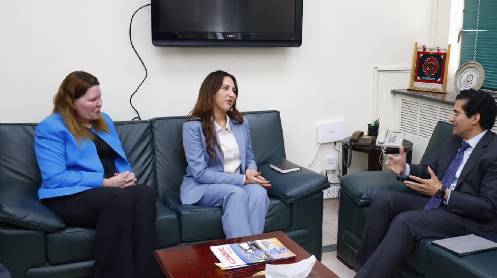ISLAMABAD: The government is expected to complete gas and electricity transmission lines to Rashakai special economic zone by this yearend, officials said on Friday.
The representatives of the developers informed a meeting that the first Unit of a steel plant is under construction in the SEZ and plant and machinery would soon be imported. In the first phase, they plan to set up first unit with an investment of $79 million to produce 500,000 tons of rebar/ construction steel. In the second phase, they intend to set up their second unit for production of industrial steel with an investment of $77 million.
The meeting was presided over by Minister for Planning, Development and Special Initiatives Asad Umar to review the progress on the development of Rashakai special economic zone under China-Pakistan Economic Corridor (CPEC) framework.
The meeting was apprised of the progress of work in SEZ, especially regarding supply of gas and electricity to the zone. It was informed that 10 MW electricity is available for Rashakai SEZ, while the transmission line for another 160 MW is under construction and will be completed by November 2021. A further addition is also planned for 2022. SNGPL representatives informed that work on the Gas supply of 30 million metric cubic feet per day to Rashakai SEZ is underway and scheduled to be completed by the end of December.
Rashakai SEZ is located near M-1 Nowshera, Khyber Pakhtunkhwa. The 1000 acres land will be developed in three phases. The total area designated for Industrial use is 702 acres, of which 159 acres will be developed in phase I, 279 acres in phase II and subsequently 264 acres in phase III. For commercial use, an area of 76 acres has been allocated.
The $60 billion CPEC kick-started five years back concentrating mainly on construction of roads and motorways and power plants to ensure energy security in the wake of massive power shortfall.
Within a last couple of years, a series of power projects transformed the country into energy-surplus destination from the power-deficient one. CPEC framework envisaged 10,000 megawatts of production capacity. Special economic zones are the next component after early harvest projects under CPEC. Initially, 27 zones were expected to be set up. The number was now reduced to nine.
Government is expecting $1.3 billion worth of exports revenue from industrial chemicals through establishing only SEZs dedicated to biotechnology. It is working on details to set up special economic zones to promote research in chemicals and biotechnology, initially in some major cities of the country.





